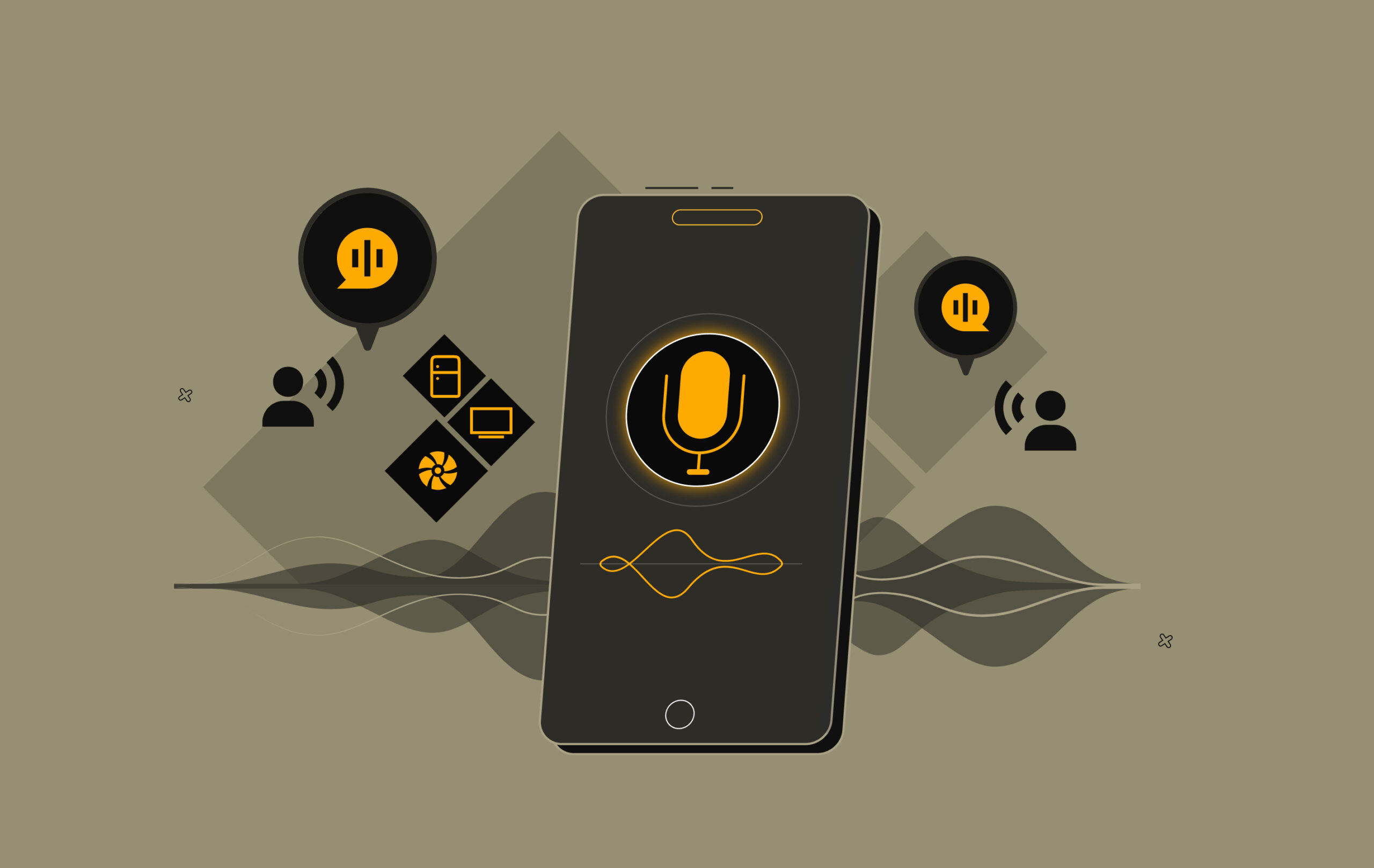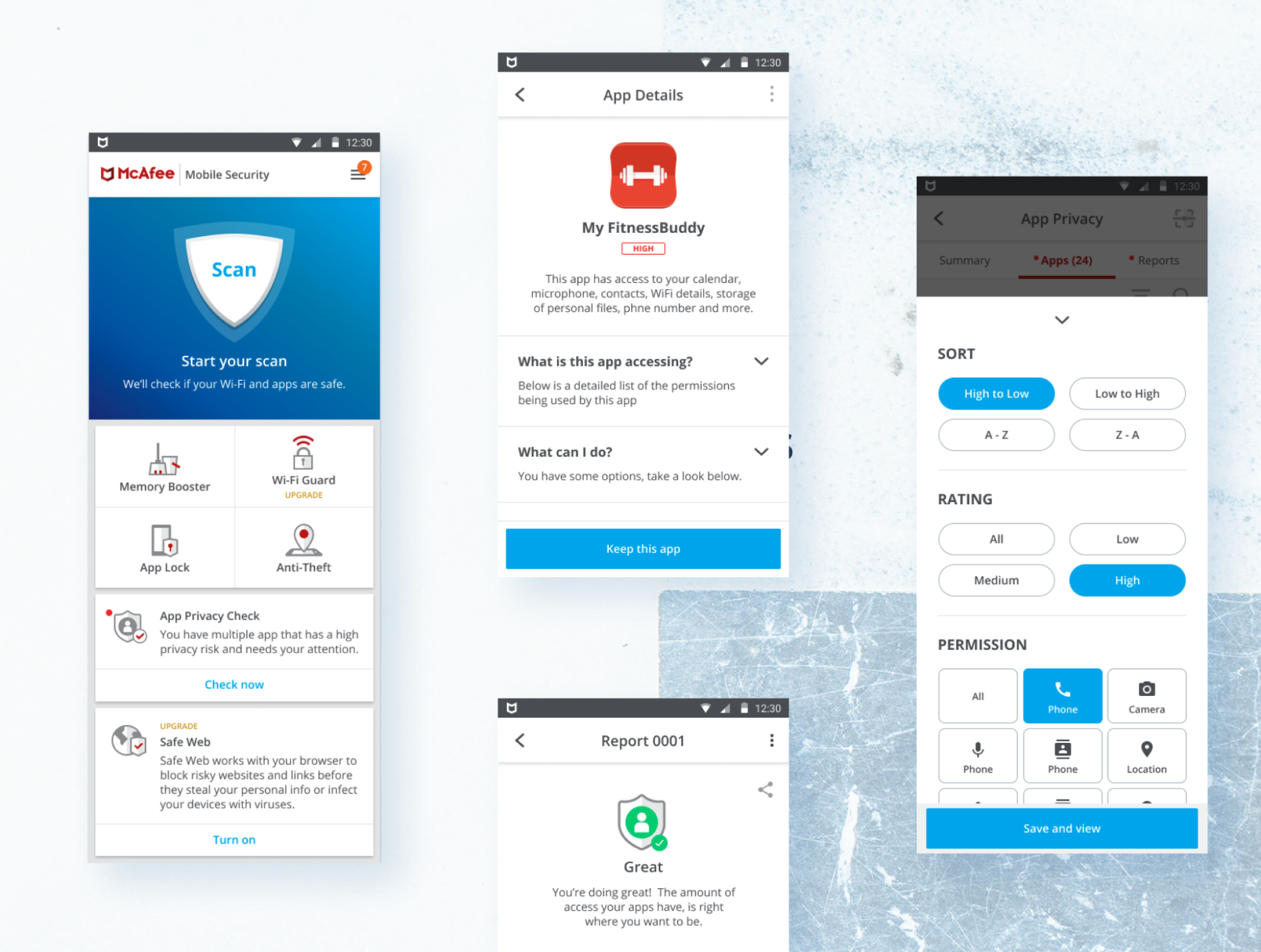The art of user experience design is changing fast. New technologies and smart devices continue to crop up every couple of months, redefining our interactions with physical and digital products. By utilizing touchscreen technology, you are now able to interact with products and services directly.
Apart from touchscreens, there are many other interfaces for the interaction of mobiles e.g. virtual/augmented reality /clap and voice commands. Voice interactions made possible by technologies like Google Assistant and Amazon Alexa add to adding to the user experience.
Voice UI design is becoming a focal point in the UI/UX design community. Globally, user interface experts are increasingly concentrating on voice user interface design to enhance this unique form of user experience. The distinct nature of voice interactions necessitates a thorough study of voice user interfaces, with a focus on the key factors that influence user experience.
Unlocking the Potential of VUI
The voice user interface (VUI) is an ever-evolving design concept. Designers must grasp the essence of VUI and master the creation of effective voice interactions. Designing for VUI goes beyond simply integrating voice commands or adding an extra layer of features and dialogue to the user journey.
Designing voice user interfaces requires UI/UX professionals to ensure the entire user experience is seamless, with voice commands enhancing the overall interaction positively.
Voice user interface design fundamentally relies on voice recognition technology integrated into smart devices. Users interact with these devices through spoken communication, mimicking human conversation.
This approach makes voice interaction both unique and appealing, yet also presents challenges. Designers need to blend conversational user interfaces with traditional graphical user interfaces to ensure a seamless and intuitive experience for the target audience.
Accessibility
Voice interfaces offer an additional advantage in terms of accessibility. Technologies like screen readers and text-to-speech systems enable individuals with cognitive or physical disabilities to access digital content more effectively.
Nevertheless, further efforts are required to ensure that voice control technologies are truly accessible. Leading organizations are actively conducting user research in this area to improve the overall experience for everyone.
Discoverability
Voice user interfaces, relying solely on audio interactions, often face challenges with discoverability. Users may find it hard to grasp the full range of what the system can do. Without visual cues, the system must verbally list all options, which can be cumbersome or impractical. This lack of clear discoverability can lead to user confusion about acceptable commands or incorrect assumptions about the system’s capabilities.
Design challenges
Voice interfaces present significant usability challenges. Unlike graphical user interfaces (GUIs), where established best practices exist, guidelines for designing voice interfaces are still in the early stages of development.
For UI/UX designers, delivering a good experience hinges on ensuring straightforward interactions. This is particularly challenging in voice user interface design, which requires significant improvement. Crafting dialog flows between humans and machines, using human communication as the ideal model, is complex.
Integrating these voice interfaces with existing, familiar user interfaces adds another layer of difficulty in creating a seamless experience that satisfies all the target audience’s needs.
Human Communication Dynamics
Human communication is the ideal model for us, facilitating seamless back-and-forth conversations based on implicit dialog principles.
Designers and developers are striving to replicate this model in human-machine interaction, aiming to enhance mutual understanding between users and technology.
This approach aligns with the fundamental principle of familiarity in UX design, suggesting that user satisfaction increases when the experience starts from a familiar context.
A major challenge in deploying voice recognition software and adapting it for human conversation is the localization of these technologies. Since many digital innovations are developed in English-speaking areas, people in the Global South frequently face a scarcity of resources tailored to their languages and cultural contexts.
Localization serves as the pivotal process to broaden accessibility to voice-controlled devices beyond Euro-American territories. UI/UX designers are actively engaged in comprehensive user research and dedicated efforts toward localizing voice user interfaces. This ensures that diverse languages, accents, and cultures can equally harness the advantages of such technologies.
Design Process for Voice Interfaces
1. User Research and Persona Development: Understanding the target users, their needs, and how they interact with voice technology.
2. Defining Use Cases: Identifying the specific tasks and scenarios where voice interaction would be most beneficial.
3. Script Writing and Prototyping: Creating conversational scripts and prototypes to test interactions. This can involve tools like flowcharts or specialized VUI design software.
4. Usability Testing: Conducting tests with real users to identify issues and gather feedback. Iterating on the design based on these insights.
5. Integration with Technology: Ensuring the design works seamlessly with underlying technologies like speech recognition engines, NLP frameworks, and connected devices.
6. Continuous Improvement: Monitoring user interactions post-launch and continuously refining the interface to improve accuracy, usability, and user satisfaction.
Key Elements of Voice Interface Design
1. Improved Accessibility
Voice User Interface (VUI) introduces an elevated level of accessibility to UI/UX design. It enables users with disabilities or physical limitations to seamlessly interact with digital products. By leveraging voice commands, individuals with restricted mobility can effortlessly navigate interfaces, complete tasks, and access information, thereby fostering a more inclusive user experience. VUI eliminates the obstacles presented by traditional graphical user interfaces, offering a more accessible solution for a broader spectrum of users. It empowers individuals with visual impairments, motor disabilities, or conditions that hinder the use of conventional input methods.
2. Natural and Fluid Interactions
Voice interactions offer a more natural and fluid means for users to engage with digital interfaces. Unlike traditional graphical user interfaces, VUI enables users to communicate with technology using their natural language. This humanizes the interaction and diminishes the learning curve, making it simpler for users to accomplish tasks and access information effortlessly. Users can engage in a dialogue with virtual assistants, issuing voice commands and receiving responses that emulate human-like interactions. This conversational aspect enhances user engagement and cultivates a sense of familiarity and ease.
3. Hands-free and Eyes-free Convenience
One of the significant advantages of VUI is the hands-free and eyes-free convenience it affords. Users can interact with devices or applications without physically manipulating them, facilitating multitasking and convenience across various contexts. Voice commands enable users to perform tasks while driving, cooking, or engaging in other activities where their hands and eyes are occupied. This hands-free and eyes-free convenience promotes safety, efficiency, and user comfort, allowing users to seamlessly integrate technology into their daily routines without interruption.
4. Tailored and Contextualized Responses
Voice assistants powered by artificial intelligence and machine learning can analyze user preferences, behaviors, and contextual information to deliver tailored responses. This customization creates a personalized user experience, offering recommendations, suggestions, and information based on individual needs and interests. It enhances engagement and provides users with more relevant and efficient interactions. For example, a voice assistant can offer personalized restaurant recommendations based on the user’s location, dietary preferences, and past dining history. This level of personalization fosters a sense of individuality and enhances user satisfaction.
5. Streamlined Complex Workflows
VUI has the potential to streamline complex workflows and interactions. Users can execute multi-step tasks with a single voice command, eliminating the need to navigate through multiple screens or menus. This method enhances efficiency, saves time, and minimizes user frustration. For instance, instead of manually navigating through a series of options on a touchscreen, users can simply instruct a voice assistant to perform a specific task, such as booking a flight or making a hotel reservation. VUI reduces the cognitive load and minimizes the steps required to complete tasks, resulting in a more seamless user experience.
6. Emotional Connection
Voice interactions can evoke emotions and establish a sense of personality and rapport. Through tone, intonation, and even humor, voice assistants can create a more emotional connection with users. Incorporating human-like qualities such as a friendly and conversational tone into voice user interfaces (VUI) enhances emotional engagement, leading to a positive user experience. This emotional connection not only builds trust but also fosters user loyalty. By making interactions more enjoyable and engaging, designers can boost user satisfaction and cultivate lasting relationships with the product or brand.
7. Design Considerations
Implementing VUI in UI/UX design necessitates careful consideration of various factors. Designers must ensure that voice interactions are clear and concise, and provide feedback to the user. Designers must predict possible misunderstandings or errors and create a system that manages these situations smoothly.
Additionally, maintaining consistency with visual elements and other UI/UX principles is crucial to providing a cohesive and seamless experience. Designers should consider the context of use, and user expectations, and provide appropriate prompts and cues to guide users through voice interactions. They also need to consider various languages, accents, and speech patterns to ensure the system accurately recognizes and interprets user commands.
Applications of Voice Interface Design
Smart Home Devices: Controlling lighting, temperature, and appliances through voice commands.
Virtual Assistants: Managing schedules, sending messages, and retrieving information.
In-Car Systems: Navigating, playing music, and making calls while driving.
Healthcare: Assisting with patient monitoring and providing hands-free data entry for healthcare professionals.
Customer Service: Enhancing call centers with AI-driven voice response systems.
Conclusion
Voice User Interface (VUI) stands as a transformative force within the realm of UI/UX design, fundamentally altering the landscape to provide a more accessible, intuitive, and deeply personalized user experience. By seamlessly integrating voice commands into digital interactions, VUI not only enhances usability but also simplifies the execution of complex tasks, fostering a profound emotional connection between users and technology.
This dynamic fusion of human speech and digital interfaces continues to evolve, presenting designers with an ever-expanding canvas upon which to innovate. As designers navigate this evolving terrain, they are compelled to adapt and harness the full potential of VUI to craft interfaces that are not just functional, but inherently intuitive and engaging.
By embracing the capabilities of Voice User Interface, UI/UX designers find themselves at the forefront of a digital revolution, shaping the future of interactive experiences. Through their thoughtful implementation of VUI, designers champion inclusivity, breaking down barriers to accessibility and opening new pathways for user engagement. In doing so, they unlock a realm of new possibilities in user interaction, ultimately enhancing user satisfaction, fostering lasting loyalty, and redefining the very essence of digital interaction.

















